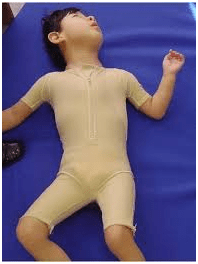YOUR CART
- No products in the cart.
Subtotal:
₹0.00
BEST SELLING PRODUCTS

Quadriplegia, also known as Tetraplegia, is paralysis is caused by illness or injury that results in the partial or total loss of use of all four limbs and torso; paraplegia is similar but does not affect the arms. The loss is usually sensory and motor, which means that both sensation and control are lost.
Tetraparesis or quadriparesis, on the other hand, means muscle weakness affecting all four limbs. It may be flaccid or spastic.
The condition of paralysis affecting four limbs is alternately termed tetraplegia or quadriplegia. Quadriplegia combines the Latin root quadra for “four”, with the Greek root ?????? plegia, for “paralysis”. Tetraplegia uses the Greek root tetra for “four”. Quadriplegia is the common term in North America.Tetraplegia is more commonly used in Europe.
2 tablet three or four times a day for 15 to 20 days or more with water or till the symptoms disappear.
Signs and Symptoms of QUADRIPLEGIA OR TETRAPLEGIA
Although the most obvious symptom is impairment to the limbs, functioning is also impaired in the torso .
Secondarily, because of their depressed functioning and immobility, people with Tetraplegia or Quadriplegia are often more vulnerable to pressure sores, osteoporosis and fractures, frozen joints,spasticity, respiratory complications and infections, autonomic dysreflexia,deep vein thrombosis and cardiovascular disease.
Severity depends on both the level at which the spinal cord is injured and the extent of the injury.
An individual with an injury at C1 (the highest cervical vertebra, at the base of the skull) will probably lose function from the neck down and be ventilator-dependent. An individual with a C7 injury may lose function from the chest down but still retain use of the arms and much of the hands.
The extent of the injury is also important. A complete severing of the spinal cord will result in complete loss of function from that vertebra down. A partial severing or even bruising of the spinal cord results in varying degrees of mixed function and paralysis. A common misconception with tetraplegia is that the victim cannot move legs, arms or any of the major function; this is often not the case. Some individuals with tetraplegia can walk and use their hands, as though they did not have a spinal cord injury, while others may use wheelchairs and they can still have function of their arms and mild finger movement; again, that varies on the spinal cord damage.
It is common to have movement in limbs, such as the ability to move the arms but not the hands or to be able to use the fingers but not to the same extent, as before the injury. Furthermore, the deficit in the limbs may not be the same on both sides of the body; either left or right side may be more affected, depending on the location of the lesion on the spinal cord.
Causes of QUADRIPLEGIA OR TETRAPLEGIA
Tetraplegia is caused by damage to the brain or the spinal cord at a high level C1–C7—in particular, spinal cord injuries secondary to an injury to the cervical spine. The injury, which is known as a lesion, causes victims to lose partial or total function of all four limbs, meaning the arms and the legs. Tetraplegia is defined in many ways; C1–C4 usually affects arm movement more so than a C5–C7 injury; however, all Quadriplegics or Tetraplegics have or have had some kind of finger dysfunction. So, it is not uncommon to have a tetraplegic with fully functional arms but no nervous control of their fingers and thumbs.
Typical causes of this damage are trauma (such as a traffic collision, diving into shallow water, a fall, a sports injury), disease (such as transverse myelitis,multiple sclerosis, or polio), or congenital disorders (such as muscular dystrophy).
It is possible to suffer a broken neck without becoming quadriplegic or tetraplegic if the vertebrae are fractured or dislocated but the spinal cord is not damaged. Conversely, it is possible to injure the spinal cord without breaking the spine, for example when a ruptured disc or bone spur on the vertebra protrudes into the spinal column.
Treatment of QUADRIPLEGIA OR TETRAPLEGIA
Treatment of Quadriplegia or Tetraplegia patients is undertaken by team of specialists in surgery, medicine and physiotherapy.
For medicinal part of treatment wherever required medicines are:
AZARAQI capsule: 1 capsule three to four times a day for 30 to 40 days with milk or warm water for anti-neuralgic effect.
ASHWAGANDHA choorna: 1 teaspoonful three to four times a day for 30 to 40 days with milk or warm water for cell and tissue repair effect.
SERY capsule: 1 capsule three to four times a day for 30 to 40 days with milk or warm water for mental strength boosting support.
DYNOGESIC Liniment: for massaging on painful muscles and joints.
.